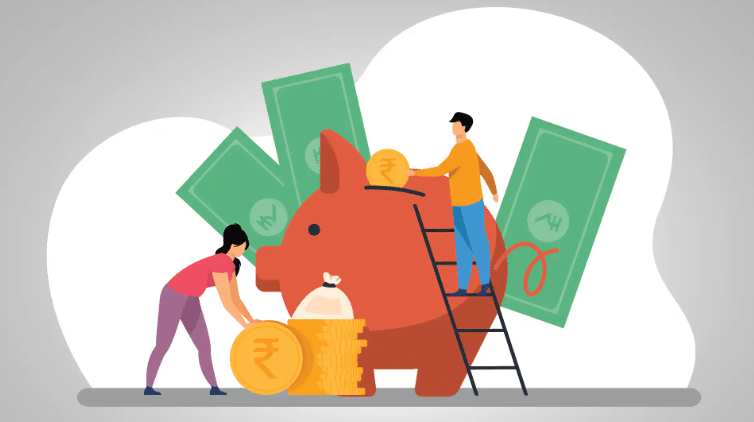Payday loans, a type of short-term borrowing intended to provide immediate economic relief between paychecks, offer an easily accessible solution for consumers confronted with sudden and unforeseen expenses. These loans often carry high-interest rates and are customarily due on the borrower’s forthcoming payday – hence their moniker “payday loan.”

The advent of payday loan apps has radically transformed the way these loans can be accessed, permitting users to apply for and manage their funds directly from their smartphones. This seamless fusion of digital innovation and lending practices has marked a new epoch of convenience and expeditiousness distinguishing payday loans from traditional bank offerings.
A noteworthy exemplar amongst iOS applications in this sphere is the “Payday Loans – Bad Credit App”. This tool champions speediness as well as accessibility, emancipating applicants from the shackles of adverse credit history while assuring approvals within one business day span. As an established authority in the finance and lending sector, this app receives accolades for its pioneering service delivery model potentially empowering every user financially.
The Rising Popularity of Online Payday Loan Services
The landscape of emergency borrowing has undergone an enigmatic transformation with the advent of online payday loan services, causing a radical shift in consumer patterns by eradicating conventional impediments tied to brick-and-mortar establishments. Convenience, a factor of paramount importance, is now pushing consumers towards this digital avenue for securing payday advances. This intriguing transition towards the virtual sphere can be traced back to various elements such as accessibility, velocity and confidentiality. The immediate dispensation combined with uncomplicated application processes places these platforms on a pedestal as consummate lenders – specifically for those individuals searching for bad credit payday loans.
This evolution in consumer inclinations has sparked an explosive proliferation of mobile apps within the lending industry’s realm. One app that is creating considerable ripples is the “Payday Loans – Bad Credit App“. Interestingly, traditional loan approval necessitates good credit history; however, this app offers a unique solution tailored for individuals grappling with less-than-perfect financial track records. It proudly offers an unparalleled opportunity allowing these individuals to acquire their much-needed payday advances swiftly – boasting impressive approval rates within merely one business day’s span. This groundbreaking app is gradually cementing its position as an indispensable tool for managing and enhancing personal finances irrespective of prior credit histories.
How Payday Loan Apps are Changing the Financial Landscape
In an accelerating digital era, the emergence of online payday loan applications has become pivotal in reconfiguring financial terrains. Platforms like the renowned “Payday Loans – Bad Credit App” offer sleek and intuitive pathways to securing loans. These applications boast distinctive traits such as almost instantaneous approvals and manageable repayment schemes, placing payday loans at consumers’ fingertips. Astoundingly, these digital avenues have stimulated a refreshing pivot by incorporating ‘no credit check’ features; individuals with less than ideal credit ratings can secure loans, thereby defying conventional banking standards.
The employment of online payday loan apps, notably the “Payday Loans – Bad Credit App”, gifts users with a unique fusion of ease, privacy, and speed that is unachievable through traditional banking procedures. Whether within their home’s confines or on-the-move, users can request loans, finish essential paperwork and receive disbursements all within one business day – setting a landmark in financial lending practices. Consequently these apps are quickly evolving into the preferred choice for those with urgent fiscal needs or those intending to reinforce or remodel their monetary standing. Their contributions have elevated them to indispensable instruments in our current financial biome.
Safeguarding Your Financial Health: The Role of Payday Loans
In a world teetering on the precipice of unexpected financial calamities, one can’t help but underscore the importance of instant cash availability. The advent of online payday loans has been a game-changer, stepping in as an economic cushion to absorb unanticipated expenses that brook no delay. This lending paradigm pivots on the borrower’s ability to clear off their debt with their upcoming salary; a pattern that trims down lender risk and expedites an effective loan process.
The “Payday Loans – Bad Credit App”, an avant-garde solution making waves in the iOS app store, is your knight in shining armour against pressing fiscal hurdles. Its real power emanates from its capacity to unlock hassle-free payday loans access even for those whose credit scores have seen better days. It stands out with rapid approval timelines, often green-lighting loan requests within a solitary business day- an attribute that proves to be incredibly advantageous for people caught up in urgent money crunch situations.This trailblazing app illustrates quantum leap forward within the payday loan landscape, underscoring how technology can foster financial inclusivity and bolster personal monetary well-being.
Overview of Noteworthy Payday Loan App on iOS
Amid the finance and lending sphere, a transformative resurgence has unfurled, especially sparked by the advent of mobile loan applications harmonious with iOS platforms. The “Payday Loans – Bad Credit App” stands out as a trailblazer, leaving an indelible imprint on the industry landscape. Its supreme advantage resides in its agility of service; it boasts capabilities to greenlight loans within merely one business day’s span, even for those wrestling with smudged credit records. This digital-driven solution endows consumers with power to swiftly and competently tackle urgent financial issues; it pledges broader accessibility for hopeful patrons aiming at securing payday loans.
Upon engagement with this app, one can smoothly traverse through its intuitive interface to procure funds. This cyber platform entirely metamorphoses borrowing procedures, dramatically curbing the necessity for protracted lines and paper documentation that were erstwhile staples in traditional banking protocols. But what sets apart “Payday Loans – Bad Credit App” isn’t limited to its fluid disbursal of payday loans—it also embeds an educational facet into its framework thereby providing users a platform to reorganize their monetary matters effectively. It emerges as an indispensable resource for any user seeking both immediate cash access without shouldering onerous unfavorable credit score repercussions and enhanced financial stability.
Evaluating the Best Cash Advance App for iOS Users
In the tempestuous and challenging sphere of personal financial management, simplicity and quick access are pivotal. The polished, approachable interface of the “Payday Loans – Bad Credit App” crowns it as a premier pick amidst top-notch cash advance apps for iOS users. Nestled at the heart of this app’s appeal is its intuitive loan facilitation process that ingeniously simplifies application procedures while promising approvals in a single business day. This swift turnaround cycle, even for those wrestling with poor credit records, emerges as an avant-garde feature that situates this mobile platform distinctly apart from traditional lending approaches.
Furthermore, the sturdy and agile customer support offered by this app receives accolades for its unwavering dedication to guide users on their fiscal journey. Bearing ten years of industry expertise like a badge of honor, “Payday Loans – Bad Credit App” presents itself as a praiseworthy instrument in the financial ecosystem. Offering solace to those endeavoring to improve their monetary situations through efficient digital solutions, this innovative product stays true to its assurances – delivering timely cash advances without any complications or delays. It stands strong exemplifying how technology paves way towards an effective digitally-empowered future in finance.
The Process of Applying for an Online Payday Loan Without a Credit Check via Apps
With the dawn of online cash advance apps, securing a payday loan has been rendered less complex. A wave of relief for customers looking for financial aid, these digital platforms can be readily downloaded from your app store of choice; an example being the highly endorsed “Payday Loans – Bad Credit App” specifically designed for iOS users.
The registration procedure is typically brisk and straightforward, primarily demanding rudimentary personal and financial details. Following successful account setup, customers are granted the liberty to input their desired borrowing amount. The crux at this juncture lies in possessing a transparent and dependable income source as it forms the fundamental yardstick against which quick payday loan requests are assessed.
The green light process for these virtual payday loans is swift with response times often falling within a day’s span post-application; amazingly credit scores need not be spotless. The ‘Payday Loans – Bad Credit App’ prides itself on its customer-centric operations effortlessly approving loans even for those whose credit histories are far from flawless.
Upon approval, funds make their way almost instantly into user-designated bank accounts making this process seamless yet brimming with speed and convenience. These characteristics transform cash advance apps into game-changers in the finance sphere.
In addition to being convenient tools working towards financial empowerment by granting easy access to needed funds when required most urgently, these mobile applications also serve as encouraging catalysts- igniting hope amidst monetary constraints.
Benefits and Drawbacks of Using Payday Loans – Bad Credit App
The advent of instant online payday loans has completely metamorphosed the mechanism through which individuals secure short-term monetary resources. In a time that once was, one would have to traverse to a lending institution in person and engage in an exhausting loan application procedure. However, with the arrival of payday loan applications like “Payday Loans – Bad Credit App,” this scenario is dramatically transformed. The process of securing a loan has been streamlined and accelerated by this tool. At any given moment from any location via their iOS devices, users can apply; what’s more enticing is the expedited approval period. Even those who bear the burden of poor credit history could find themselves approved within just one business day.
This progressive leap in financial technology undeniably aids those urgently requiring cash, granting them the power to promptly tackle their fiscal challenges.
Yet despite these seemingly attractive benefits presented by such instant online payday loans, they harbor their fair share of disadvantages too. They may be speedy and convenient but often exact exorbitant interest rates upon users who risk being ensnared within a relentless cycle of debt if repayment plans aren’t precisely charted out.
Furthermore, potential privacy issues loom large as these apps necessitate submission personal and financial details during application stages – leaving open vulnerabilities for data breaches or information misuse should stringent security measures not be placed effectively on these platforms.
Thus while payday loan applications might serve as vital lifelines during financially dire straits, it remains imperative that caution is exercised and wise usage practiced when dealing with them.
Tips for Selecting a Reliable Cash Advance App
In the ever-flourishing landscape of digital transactions, it becomes a labyrinthine task to pinpoint platforms that are both dependable and secure for online monetary exchanges. A shining beacon in this convoluted realm is the “Payday Loans – Bad Credit App”. This app doesn’t merely cater to iOS device users but also offers services that are punctual and steadfast.
Regardless of any blemishes on a user’s credit history, this application boasts an ability to greenlight loans within just one business day—a swift response time that truly distinguishes the “Payday Loans – Bad Credit App” from other rivals dwelling in the same fiscal stratosphere.
With over a decade spent navigating through the tumultuous seas of finance and lending, it becomes abundantly clear: payday loan applications are not forged from the same mold. The “Payday Loans – Bad Credit App” holds its ground firmly when evaluated against key yardsticks delineating reliable financial aid tools. For those looking to refurbish their economic conditions, this application lays down stepping stones with its streamlined interactions and simplified services.
The inherent versatility of this app addresses an extensive spectrum of user requirements—this not only decodes complexities tied to borrowing but also delivers plausible solutions for unforeseen financial setbacks.









